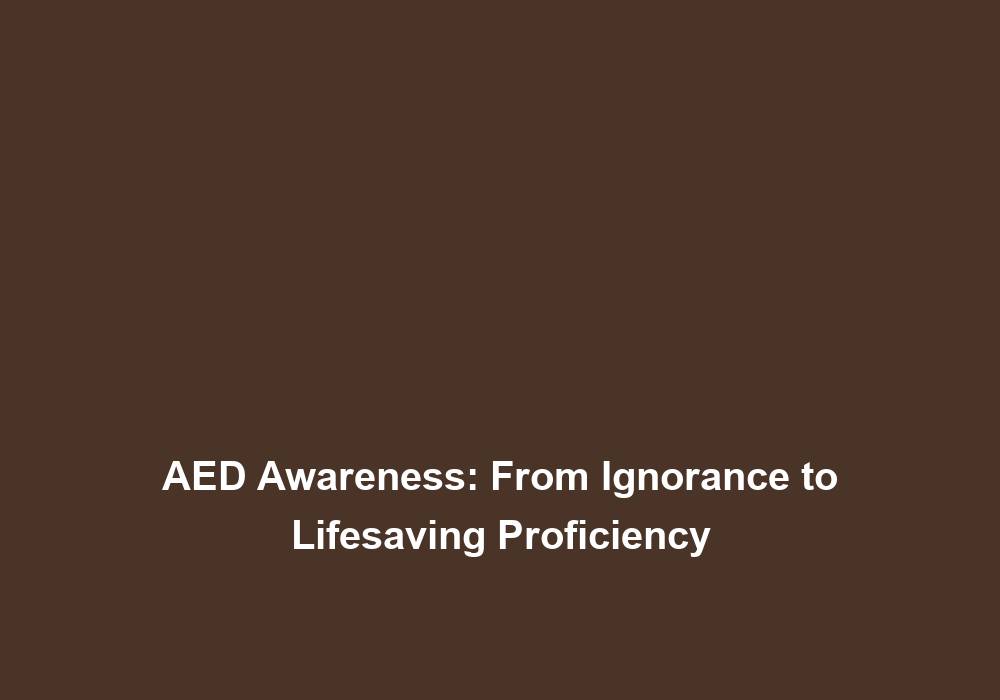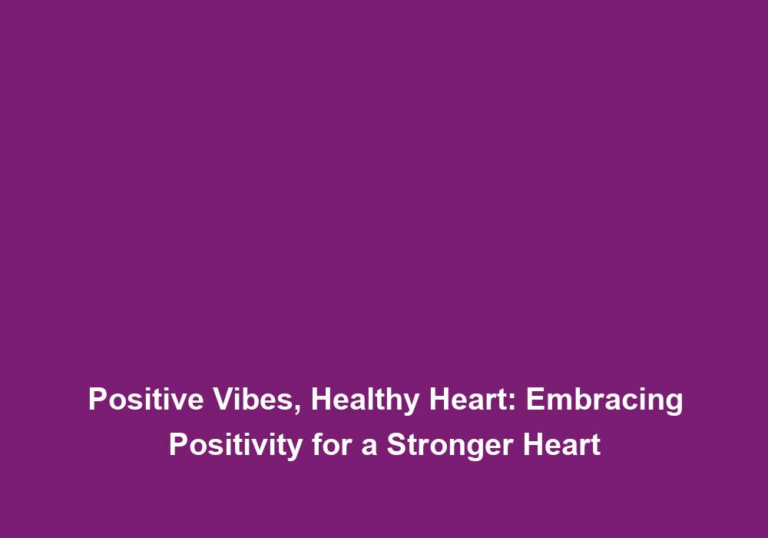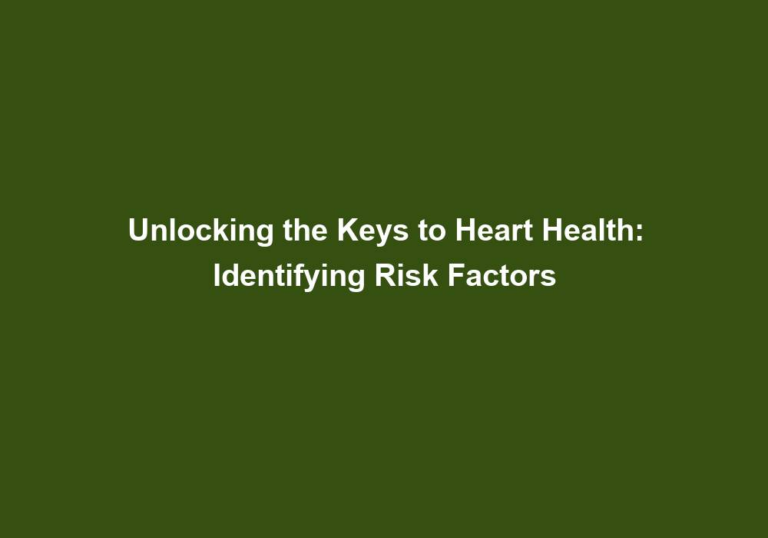AED Awareness: From Ignorance to Lifesaving Proficiency
Did you know that sudden cardiac arrest (SCA) is one of the leading causes of death globally? According to the American Heart Association, nearly 350,000 out-of-hospital cardiac arrests occur in the United States each year, and sadly, almost 90% of them are fatal. However, immediate defibrillation with an automated external defibrillator (AED) can increase the chances of survival by up to 70%. This emphasizes the critical importance of AED awareness and proficiency in saving lives.
Understanding AEDs
What is an AED?
An automated external defibrillator (AED) is a portable electronic device that delivers an electric shock to a person’s heart in case of a sudden cardiac arrest. It is specifically designed to be user-friendly, enabling even non-medical professionals to provide lifesaving care before emergency medical services arrive.
How does an AED work?
When someone experiences sudden cardiac arrest, their heart’s electrical system malfunctions, causing an irregular heartbeat (arrhythmia). An AED works by analyzing the heart’s rhythm and determining if a shock is needed. If the AED detects a shock is necessary, it delivers it to restore the heart’s normal rhythm.
Where are AEDs commonly found?
AEDs are commonly found in public places such as airports, shopping malls, schools, gyms, and offices. They are often housed in easily accessible cabinets or wall-mounted cases with clear signage indicating their location. It is crucial to be aware of the presence of AEDs in your surroundings to ensure prompt access in case of an emergency.
AEDs can also be found in various other locations, including sports stadiums, concert venues, and public parks. These devices are strategically placed to provide quick access to potential victims, as every minute counts in saving a life during sudden cardiac arrest.
The Importance of AED Awareness
Early intervention saves lives
Time is of the essence when it comes to sudden cardiac arrest. The chances of survival decrease by approximately 7-10% for every minute that passes without defibrillation. Therefore, being aware of the nearest AED’s location and knowing how to use it can significantly increase the odds of saving a life.
To emphasize the importance of early intervention, consider the following points:
- Immediate access to an AED allows for early defibrillation and significantly improves the chances of restoring a normal heart rhythm.
- The brain starts to suffer irreparable damage within just a few minutes of sudden cardiac arrest, making prompt action crucial for preventing long-term complications or fatalities.
- AEDs provide step-by-step instructions on how to use them, making it easier for bystanders to provide immediate care even without prior medical training.
Empowering bystanders to take action
Sudden cardiac arrest can strike anyone, anywhere, at any time, and it often occurs in the presence of bystanders. By raising awareness about AEDs and educating the public about their usage, we empower bystanders to take immediate action when faced with a cardiac emergency. This can make a substantial difference in the outcome for the victim.
Here are some key points to consider regarding bystander intervention:
- Encouraging bystanders to recognize the signs of sudden cardiac arrest, such as a loss of consciousness and lack of breathing, can help them quickly identify when to initiate CPR and use an AED.
- AED awareness campaigns should focus on dispelling common myths and misconceptions about defibrillation, emphasizing its safety and effectiveness.
- Training programs that teach basic life support skills, including CPR and AED usage, can equip bystanders with the knowledge and confidence needed to respond appropriately during emergencies.
Complementing CPR
Cardiopulmonary resuscitation (CPR) is a vital step in providing initial care during a cardiac arrest. However, combining CPR with early defibrillation using an AED is the most effective approach for improving survival rates. AEDs are designed to be used in conjunction with CPR, and their availability in public spaces aims to support bystanders in delivering comprehensive care.
Here’s why CPR and AED usage go hand in hand:
- CPR helps circulate oxygenated blood to vital organs, including the brain, but it does not restore a normal heart rhythm.
- AEDs can analyze the heart’s rhythm and determine if defibrillation is necessary. If a shock is needed, the AED delivers it, potentially restoring a normal heart rhythm.
- By providing immediate CPR and using an AED, bystanders can maximize the chances of a successful resuscitation before emergency medical services arrive.
AED Training and Proficiency
Learning to use an AED
Using an AED may seem intimidating, but proper training and familiarization can help individuals gain confidence in their ability to respond effectively during a cardiac emergency. Many organizations and healthcare providers offer AED training courses, which cover topics such as recognizing cardiac arrest, operating the AED, and performing CPR.
Key points regarding AED training:
- AED training courses should provide hands-on practice with different types of AED models to ensure participants are comfortable using any device they may encounter.
- Training should emphasize the importance of quick response, proper electrode placement, and following the AED’s voice prompts and visual cues.
- Training programs should also address potential challenges or complications that can arise during AED usage, such as the presence of water, excessive chest hair, or metal jewelry.
AED certification and recertification
Becoming certified in AED usage demonstrates a higher level of proficiency and knowledge. AED certification courses ensure that individuals are well-equipped to respond appropriately in emergency situations. It is essential to stay up to date with the latest guidelines and recommendations by participating in recertification courses regularly.
Here’s why certification and recertification are important:
- Certification courses provide a comprehensive understanding of AED functionality, maintenance, and troubleshooting, along with reinforcing skills in CPR and basic life support.
- Recertification courses help individuals stay updated on any changes in protocols, guidelines, or advancements in AED technology.
- Certified individuals are more likely to feel confident and competent when using an AED, reducing the risk of hesitation or errors during critical moments.
AED Maintenance and Accessibility
Regular maintenance and checks
To ensure optimal functionality, AEDs require regular maintenance and checks. These devices usually have built-in self-tests that perform routine diagnostics, alerting users if any issues arise. Additionally, it is crucial to have a designated individual or team responsible for inspecting and maintaining AEDs in public spaces.
Consider the following maintenance practices:
- Regularly inspect the AED’s batteries, electrodes, and other components to ensure they are in good working condition and within their expiration dates.
- Perform routine self-tests as recommended by the manufacturer to verify the AED’s readiness and address any detected issues promptly.
- Keep an inventory of spare batteries, electrodes, and other necessary accessories to ensure quick replacement when needed.
Accessibility and awareness
AEDs must be easily accessible and visible in public areas. Placing them in well-marked locations increases their visibility and the likelihood of prompt use during an emergency. Awareness campaigns, signage, and educational initiatives can further enhance public understanding and utilization of these lifesaving devices.
Consider the following strategies to improve accessibility and awareness:
- Install AEDs in highly visible locations, ideally near high-traffic areas or areas prone to sudden cardiac arrest incidents.
- Use clear and recognizable signage to indicate the presence and location of AEDs, ensuring that individuals can easily locate them during emergencies.
- Implement educational initiatives that target specific populations, such as schools, workplaces, or community organizations, to increase awareness and promote AED usage.
Conclusion
AED awareness is a critical component of combating sudden cardiac arrest and improving survival rates. By understanding the importance of AEDs, raising public awareness, and promoting proficiency through training and maintenance, we can bridge the gap between ignorance and lifesaving proficiency. Remember, anyone can be a lifesaver by knowing the location of the nearest AED and how to use it. Together, let’s make AEDs more accessible and empower communities to save lives.







